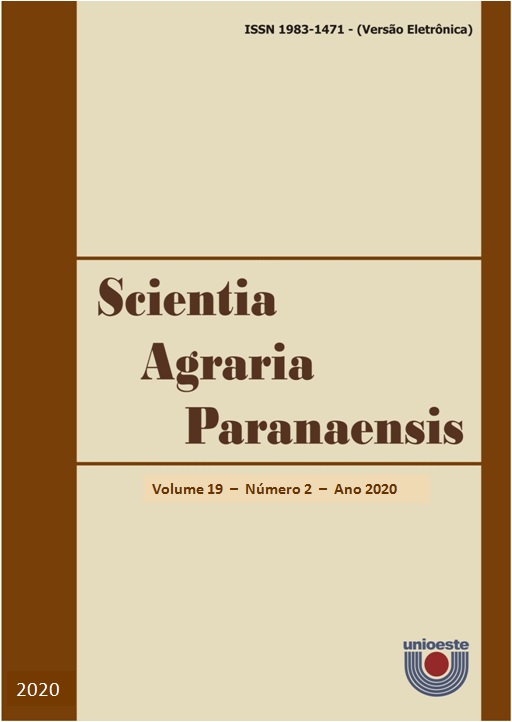Methods of preparing propagules for tropical woody bamboo species
DOI:
https://doi.org/10.18188/sap.v19i2.23386
Agências de fomento
Resumo
The production of seminal bamboo seedlings is considered not viable, being this the biggest limiting factor. The tissue culture and minicutting are efficient, but very costly techniques, which makes it necessary to search for alternative techniques, such as propagation through culm sections. In this context, the objective of this study was to evaluate the efficiency of three methods of vegetative propagation with segments of the culm of the species Bambusa vulgaris, B. variabilis, B. tuldoides and Dendrocalamus giganteus. The experiment was carried out in a randomized block design, factorial scheme of four (4) species (Bambusa vulgaris, B. variabilis, B. tuldoides and Dendrocalamus giganteus) and three (3) methods of preparing the propagule (a single node, binodal propagule, and binodal propagule + H 2 O), with four replicates and plots of five propagules. The propagules were deposited in shallow pits kept in field conditions. At 45 days, the percentage of shoots was measured and analyzes of variance and Tukey were performed at 5% error probability. For D. giganteus, none of the methods of preparing the propagules proved to be efficient for their propagation. The species B. vulgaris, B. variabilis and B. tuldoides showed higher percentages of sprouting. The method of preparing propagules with a single node was more efficient for B. variabilis, B. vulgaris and B. tuldoides.Downloads
Arquivos adicionais
Publicado
16-07-2020
Como Citar
NIERI, E. M.; ALMEIDA, R. S. de; MELO, lucas A. de; CARTOLANO, R. T. Methods of preparing propagules for tropical woody bamboo species. Scientia Agraria Paranaensis, [S. l.], v. 19, n. 2, p. 196–199, 2020. DOI: 10.18188/sap.v19i2.23386. Disponível em: https://e-revista.unioeste.br/index.php/scientiaagraria/article/view/23386. Acesso em: 5 dez. 2025.
Edição
Seção
Nota Científica
Licença
Aviso de Direito Autoral Creative Commons
Política para Periódicos de Acesso Livre
Autores que publicam nesta revista concordam com os seguintes termos:
1. Autores mantém os direitos autorais e concedem à revista o direito de primeira publicação, com o trabalho simultaneamente licenciado sob a Licença Creative Commons Attribution que permite o compartilhamento do trabalho com reconhecimento da autoria e publicação inicial nesta revista.2. Autores têm autorização para assumir contratos adicionais separadamente, para distribuição não-exclusiva da versão do trabalho publicada nesta revista (ex.: publicar em repositório institucional ou como capítulo de livro), com reconhecimento de autoria e publicação inicial nesta revista.
3. Autores têm permissão e são estimulados a publicar e distribuir seu trabalho online (ex.: em repositórios institucionais ou na sua página pessoal) a qualquer ponto antes ou durante o processo editorial, já que isso pode gerar alterações produtivas, bem como aumentar o impacto e a citação do trabalho publicado (Veja O Efeito do Acesso Livre).
Licença Creative Commons
Esta obra está licenciada com uma Licença Creative Commons Atribuição-NãoComercial-CompartilhaIgual 4.0 Internacional, o que permite compartilhar, copiar, distribuir, exibir, reproduzir, a totalidade ou partes desde que não tenha objetivo comercial e sejam citados os autores e a fonte.


